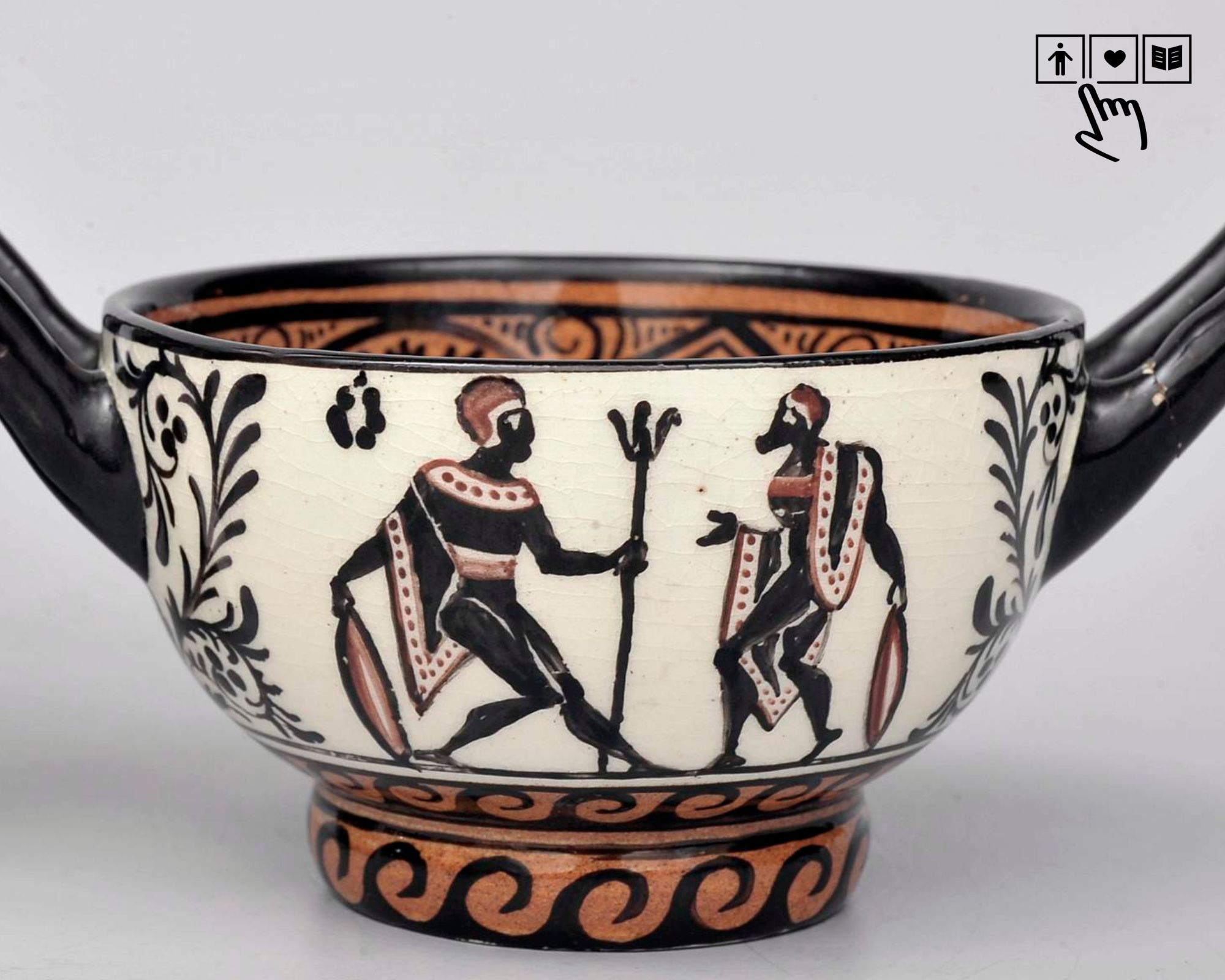Augmentative and Alternative Communication (AAC)
Augmentative and Alternative Communication (AAC)
The very specific needs of visitors who communicate non-verbally mean that they do not have access to information without support and properly prepared materials. This limits participation in social life and independent action. Additionally, it is an extremely diverse group. Forms of communication are selected very individually, so not every AAC solution will support every person communicating non-verbally. To improve cognitive accessibility and support the participation of people communicating non-verbally in active cultural life, we prepare visual information using pictograms.
Solution
Augmentative and Alternative Communication (AAC) encompasses the communication methods that are different than spoken language. Various systems are used for communication:
Solutions prepared for users who communicate non-verbally include, for example, communication boards, social stories, guides.
- graphic (drawings, pictograms, letters, photos), and
- motor skills (manual signs, facial expressions, gestures).
Solutions prepared for users who communicate non-verbally include, for example, communication boards, social stories, guides.
For whom?
It is a form of communication addressed to people of all ages who, for any reason, have not mastered or have lost the ability to use speech to communicate in a way that is understandable to everyone, e.g. people:
For people with limited mobility and difficulties in using spoken language, pictograms serve as an alternative form of communication. Thanks to them, these people can communicate with their immediate surroundings.
If there are no physiological or neurological obstacles, visual communication using pictograms may be helpful in the emergence of speech.
In the case of older people who suffer from cognitive disorders (e.g. aphasia, Alzheimer's disease, etc.) that require the use of augmentative or alternative means of communication, visual aids are used temporarily or permanently.
Visual information also supports other groups, such as tourists or immigrants who do not know the language of a given country. Then visual aids can help you navigate and communicate.
- with cerebral palsy,
- with intellectual impairments,
- with neurological diseases (e.g. aphasia, Parkinson’s disease),
- on the autism spectrum.
For people with limited mobility and difficulties in using spoken language, pictograms serve as an alternative form of communication. Thanks to them, these people can communicate with their immediate surroundings.
If there are no physiological or neurological obstacles, visual communication using pictograms may be helpful in the emergence of speech.
In the case of older people who suffer from cognitive disorders (e.g. aphasia, Alzheimer's disease, etc.) that require the use of augmentative or alternative means of communication, visual aids are used temporarily or permanently.
Visual information also supports other groups, such as tourists or immigrants who do not know the language of a given country. Then visual aids can help you navigate and communicate.
Our proposals
In the museum, we prepare materials using pictograms. The project has created guides and visual cards used for conducting classes and for individual visits.
About interesting dishes_AAC
PDF 1.24 MB DownloadAbout ceramics_AAC
PDF 1.07 MB DownloadIconographic Cabinet_Palace in the past and today_AAC
PDF 1.71 MB DownloadAbout the Rycin Cabinet_AAC
PDF 1.10 MB DownloadOlifant_AAC
PDF 910.69 KB DownloadBulawa_AAC
PDF 1,022.31 KB DownloadMisiurka_AAC
PDF 762.84 KB DownloadHistorical Cabinet_Medallions_AAC
PDF 972.67 KB DownloadGabinet Historyczny_Popiersia i pomniki_AAC
PDF 915.20 KB DownloadAbout the painting Man lighting a torch_AAC
PDF 873.54 KB DownloadAbout the painting Girl with forget-me-nots_AAC
PDF 1.10 MB DownloadAbout the Salvador Mundi's painting AAC
PDF 1.22 MB DownloadAbout the Potocki Collecting exhibition – information_ACC
PDF 1.19 MB Download
The project is carried out as part of the project entitled “Culture without barriers” financed by the Operational Programme Knowledge Education Development (POWER) 2014-2020, Measure 4.3 Transnational cooperation, implemented by the State Fund for the Rehabilitation of the Disabled, in partnership with the Ministry of Culture, National Heritage and Sport, the Culture Without Barriers Foundation and the Institut für Bildung und Kultur e.V. (The Institute for Education and Culture, Remscheid, Germany).
